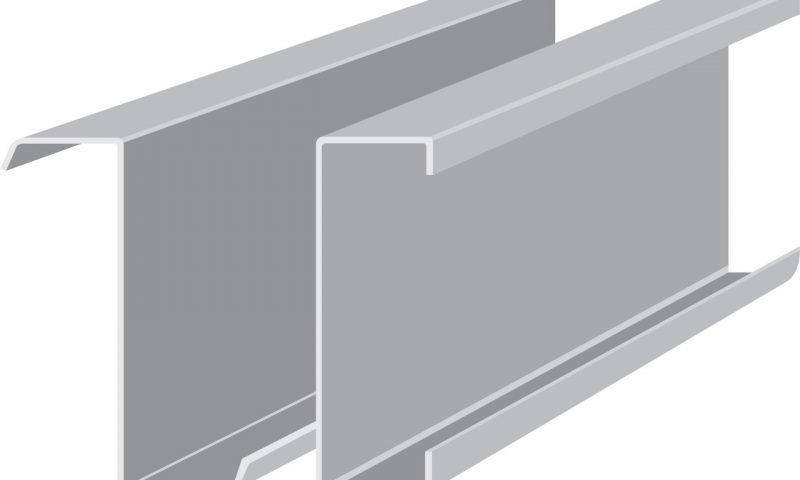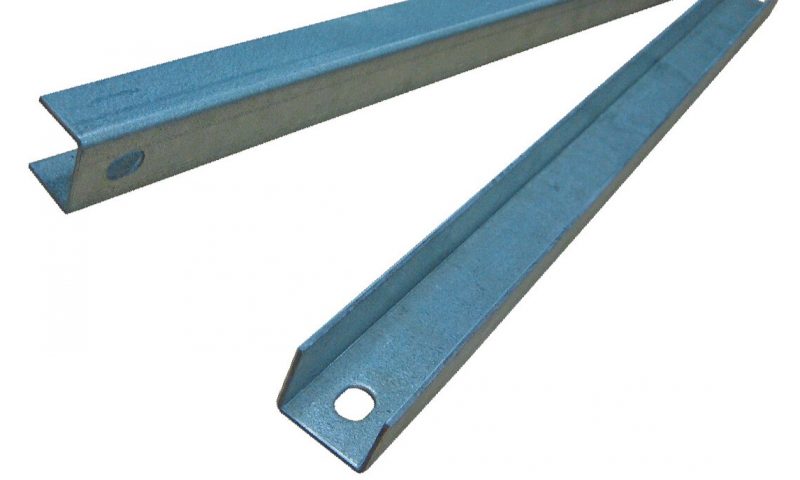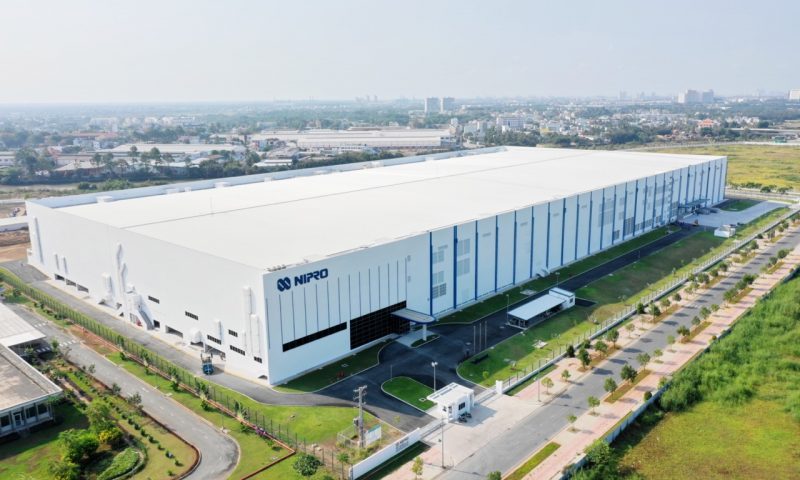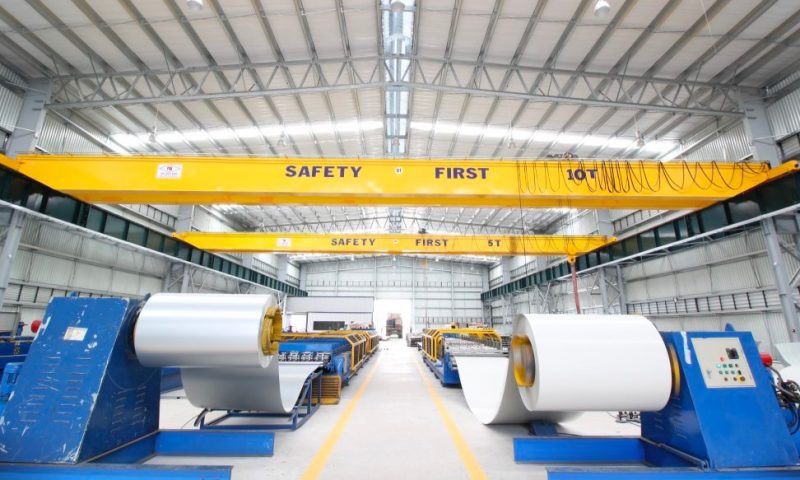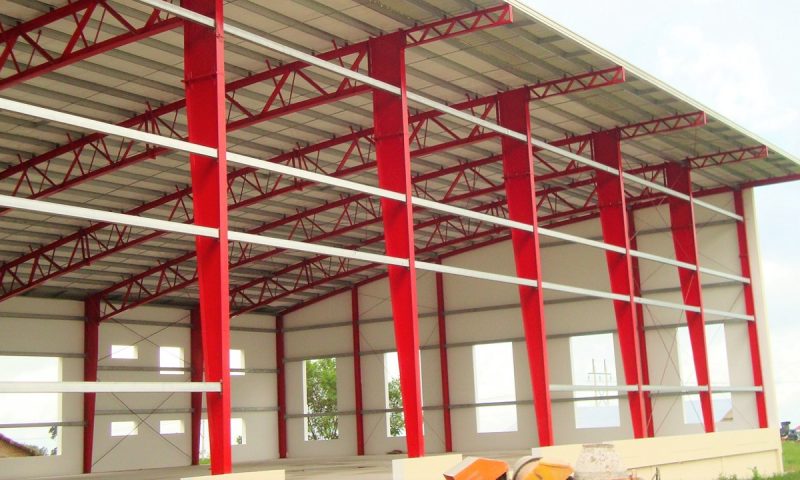Gutters are a common item that are used in constructions nowadays. This is an accessory that is usually attached when installing a roof with good aqueducting capacity. So what specifically is a gutter? What types of gutters are there and why should we use this item? Join Pebsteel to find answers to the above questions in the article below.
1. What is a gutter?
In construction, in addition to the main building materials, the accompanying items have a significant impact on the design quality. The gutter is one of the typical accessories. As we can see, it appears in a lot of buildings from housing to factories. So what is the definition of a gutter?
The gutter is also known as the water trough. It is made from materials such as plastic, aluminum, stainless steel… with many different sizes. The installation spot is usually on the lower edge of the roof. Its main function is to absorb and drain rainwater, preventing stagnation causing leakage or reflux of rainwater into the building.
2. Types of gutters
2.1 Composite Plastic Gutters
Composite plastic gutters are also known as PVC gutters. This is a material made from glass fibers, polyester resin and some types of specialized additives. Thanks to this, the gutter is highly durable and does not get moldy or rusty. It also has the advantage of being easy to preserve and clean conveniently. However, the cost of this material is usually quite high, the ability to change shape to fit the design requirements is quite restricted.
2.2 Stainless Steel Gutters
Stainless steel gutters are accessories made from 201 or 304 stainless steel materials. In particular, stainless steel 304 is a material that is more commonly used because of its corrosion resistance and good antioxidants. The advantage of stainless steel troughs is the ability to withstand rainstorms, strong winds. Stainless steel material helps the trough to be thinly inlaid or bent to match the design of the construction. As a result, it can be used for many different types of constructions.
2.3 Alloy Gutter
Alloy gutters are also materials that are installed in many constructions. Its features are lightweight, easy to transport and install. The alloy material is durable, can withstand many extreme weather conditions. The cost of materials is affordable, so this type of gutter is also an option that is considered by many users.
3. Why should we use gutters for constructions
A sustainable roof is one of the determinants of the life of the construction. Under many extreme weather conditions, especially heavy rain, the roof is easily seeped, leaky, damaged. The optimal solution is to install a gutter system.
Its main function is to help drain water quickly. When the rainwater falls on the roof, it will flow along the trough down to the ditch and is led out. . Besides that, the installation of gutters also helps to increase the aesthetics of the construction and give the overall structure more harmony and attractive
4. Things to keep in mind when installing gutters
In addition to choosing the right type of gutter, the installation process also has a significant impact on the performance and durability of this material. In addition, this system is often located outside the construction, if it is poorly installed, it will be clear to see the weaknesses and limitations. Here are some issues to keep in mind:
- Choosing a reputable and well-branded gutter supplier. Pay attention to the warranty factor to ensure the quality of the system.
- The installation process should ensure the correct implementation of the requirements and techniques. The joint locations especially need to be constructed correctly and have solid welds.
- It is recommended to consult installation information from consultants or people with construction expertise to choose the right gutter size and fit the design of the construction.
- It is recommended to install more anti-garbage nets to restrict congestion, stagnation of rainwater that reduce the life of the constructions.
- It is necessary to clean regularly and maintain the gutter periodically to ensure the best use efficiency.
For prefabricated buildings and steel structures, the installation of drainage systems is also a matter of special concern. Its function is to coordinate the flow of rainwater, minimize stagnation and maintain the life of the construction
Understanding this issue, Pebsteel always focuses on each step of the design. For gutters, the preferred material of choice is cold rolled steel. Common types of gutters are the eave gutter and the valley gutter. In particular, the valley gutter will be installed at the adjacent spot between the roofs or in areas with the difference in height. Let’s refer to some of the following images of quality and genuine gutters in Pebsteel’s prefabricated steel buildings:
Here’s the information related to the gutter. If you still have any questions that need to be answered and the design of civil steel frame buildings, please contact at the following email: marketing@pebsteel.com.vn or phone number +84 908 883531 for specific advice.

